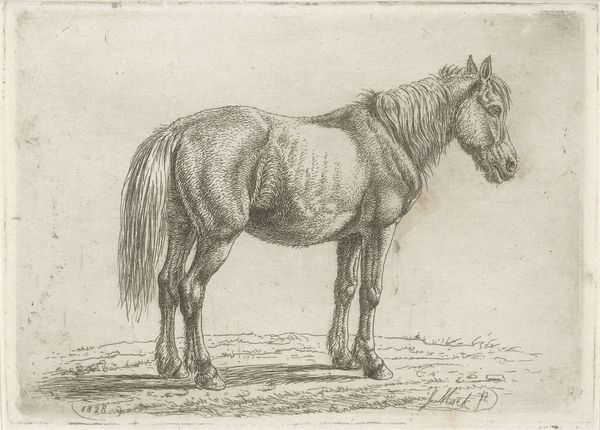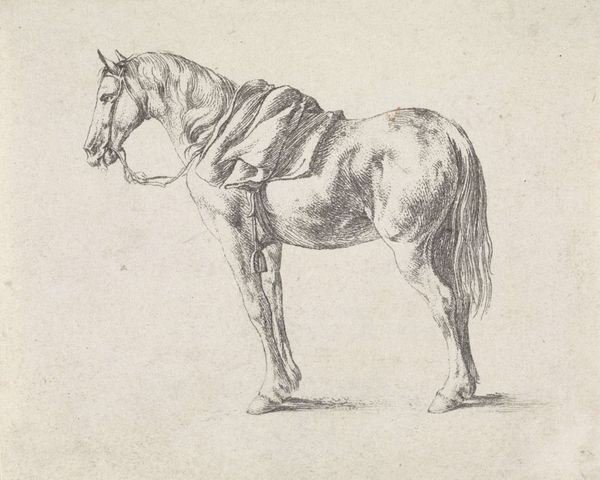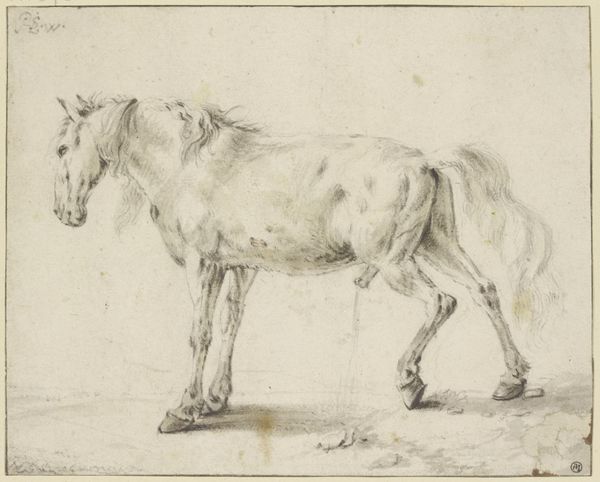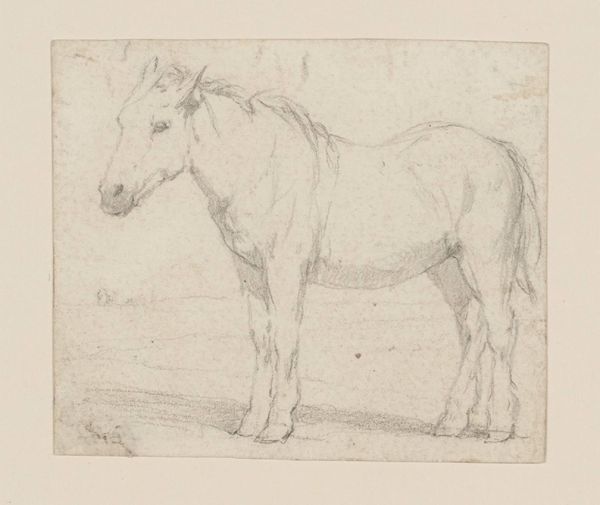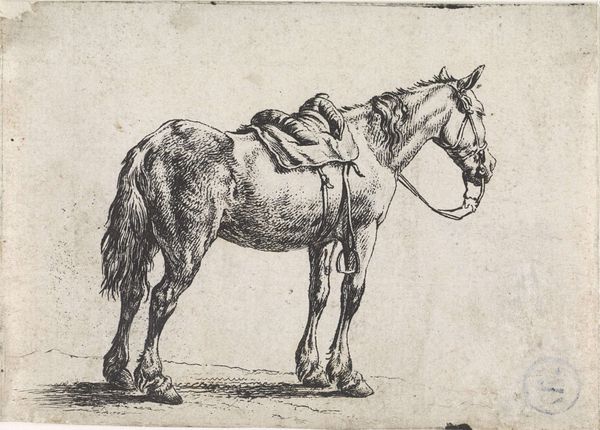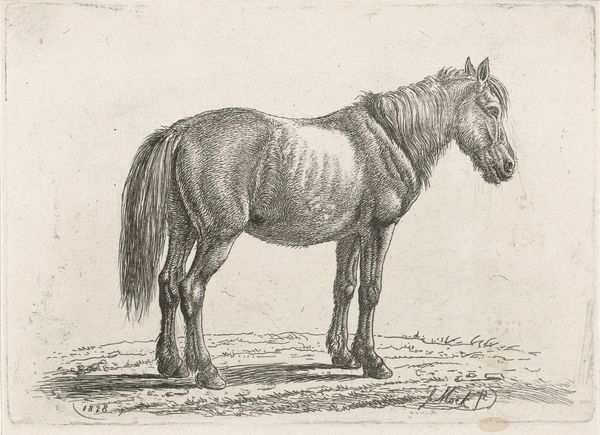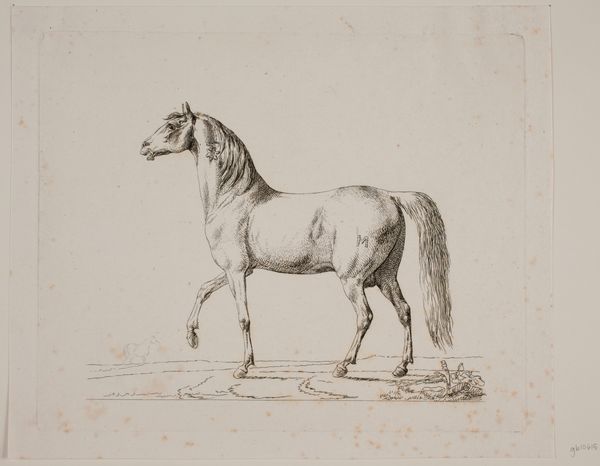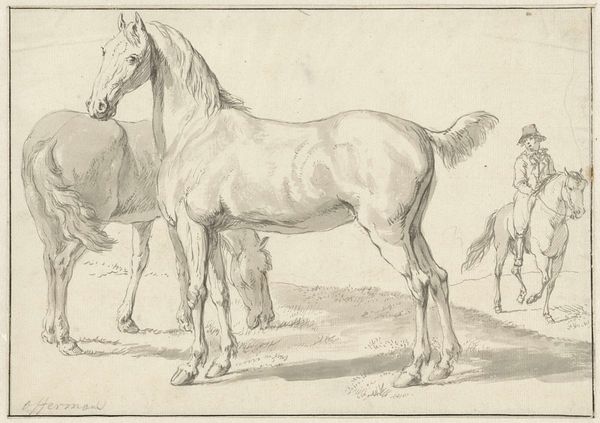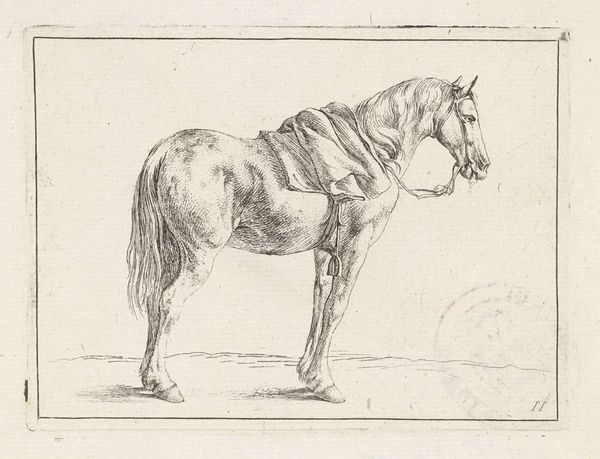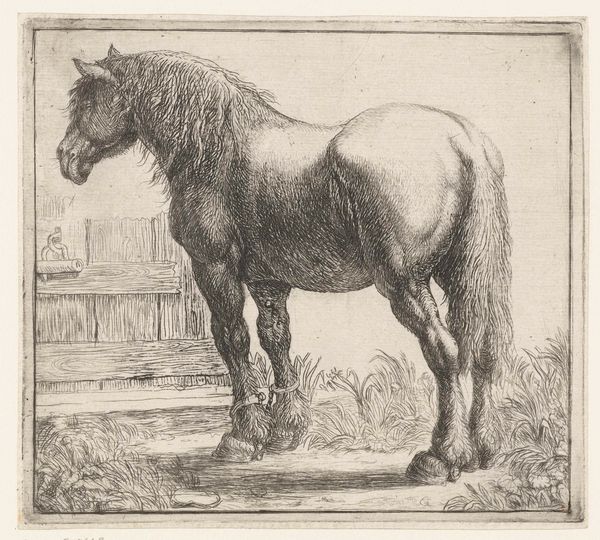
drawing, etching, pencil
#
drawing
#
comic strip sketch
#
quirky sketch
#
animal
#
etching
#
pencil sketch
#
landscape
#
figuration
#
form
#
personal sketchbook
#
idea generation sketch
#
sketchwork
#
pen-ink sketch
#
pencil
#
horse
#
line
#
sketchbook drawing
#
genre-painting
#
storyboard and sketchbook work
#
realism
#
initial sketch
Dimensions: height 73 mm, width 101 mm
Copyright: Rijks Museum: Open Domain
Dirk Maas created this small print of a standing horse sometime around the turn of the 18th century. It's an etching, meaning that the artist would have used a sharp needle to draw through a waxy ground applied to a copper plate. The plate was then immersed in acid, which bit away at the exposed lines, allowing them to hold ink. Look closely, and you'll see the tremendous amount of work that has gone into this image. Thousands of tiny, precise scratches have been made on the plate by the artist. These give the horse a real sense of volume and texture. In Maas’ time, prints were a key way of circulating images, almost like a proto-photograph. Consider how this humble medium allowed the likeness of a fine animal to be widely appreciated, a democratization of art through craft. When we look closely at these works on paper, we can understand the labor and social context that went into them.
Comments
No comments
Be the first to comment and join the conversation on the ultimate creative platform.
